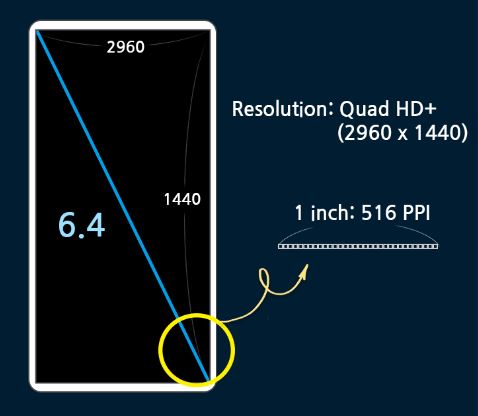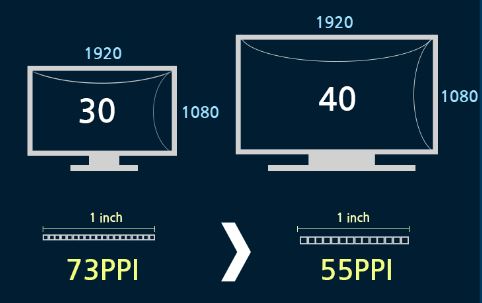Pixels per inch (PPI) refers to the number of pixels per inch of a display screen. Even if display devices have the same resolution, the sharpness of the image is different depending on the screen size. For instance, a smartphone and a TV with the same resolution express different precision. ‘PPI’ is necessary concept to accurately compare the resolution of different display sizes. The higher the PPI, the higher number of pixels that are packed into the same area. Therefore, a more sophisticated and clearer image can be represented.

Pixels per inch (PPI) refers to the number of pixels per inch of a display.
Since the size of smartphones and that of TV are different, it is possible to simply compare the resolutions using PPI.
The higher the PPI, the higher the number of pixels that can represent colors, thus a more sophisticated and clearer image can be created.

When the two display models have different screen sizes, their PPI densities differ even if identical resolutions. With the same resolution, the smaller the size of the display, the higher the PPI, which can lead to clearer images.



